This is a guest blog post from our mezcalerbro Chris
Palenque visits are some of my fondest memories from trips to Oaxaca. A palenque is a mezcal distillery where the agave is roasted, crushed, fermented, distilled, and bottled. I’ve been lucky enough to have enjoyed intimate visits with some of the most gracious mezcaleros and mezcaleras. You might be preparing for your first, or tenth palenque visit, or you plan to go someday down the road. This blog will tell you everything you need to know about what to expect when visiting a palenque.
There are hundreds of palenques within a few hours drive from Oaxaca Centro; some are right on the main highways and others are nested deep in remote villages via hazardous dirt roads. There are various ways you can visit palenques. Besides driving yourself, you can hire a guide to take you or someone who works for the palenque may drive you out there. If you are looking for a guide in Oaxaca, check out the Mezcal Reviews’ blogs A Tour with Oaxacking: Mezcal Ilegal, Convite, Pulque, and More, and A Mezcal Tour with Alvin Starkman.
Have the Essentials Ready
The day before you head out on your palenque adventure there are a couple of things you need to do. First, make sure you have plenty of pesos, primarily to buy mezcal, but also to tip your guide and/or driver. Smaller pesos are useful as well to make change. I can’t tell you how many regrets I had about visiting Reina Sanchez and only having enough pesos to buy one bottle of Tepeztate. Reina is a female mezcalera who lives in San Luis Amatlan, a village of Mihuatlan. She welcomed a small group of us with open arms. Her mom cooked us chicken mole while Reina cracked opened Modelos with her back teeth and poured us Madrecuixe from a giant plastic pitcher. I still cherish a little clay copita she gifted me. Reina and her family showed us quintessential Oaxacan hospitality.
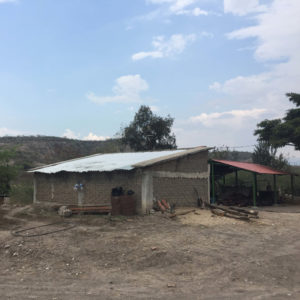
Reina Sanchez’s palenque, near her home. This size and build is somewhat average among Oaxacan small-batch producers.
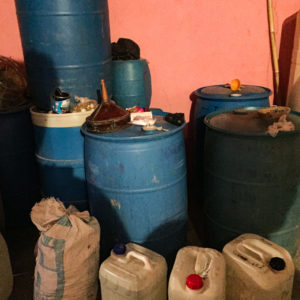
The mezcal storage containers at Reina Sanchez’s palenque. Some producers store their mezcal in glass jugs, while others use plastic or steel.
It’s a good idea to bring empty water bottles with you on your visits. You may find yourself at a palenque in Ixcatlan and mezcalero Amando Alvarez has some rawhide fermented papalote to sell you but they don’t have any bottles for you. This is where that empty bottle comes in handy. Additionally, bring some full water bottles and some snacks. You will want to keep yourself hydrated throughout the day.
Wearing comfortable, practical clothing to a palenque will also enhance your experience. Check the forecast before going out for the day. If it’s hot and sunny, I recommend wearing a hat, you may be touring around a sunny agave field. Most importantly, wear some sort of athletic footwear, I would not recommend anything open-toed. When visiting Alberto Martinez in Santa Catarina Albarradas (5 Sentidos exports some of his delicious offerings) a friend of mine was wearing 20-year-old hiking boots. Alberto took us hiking up his mountain to see his giant maturing Sierra Negra agaves. On the way down the mountain, my friend’s hiking boot came apart with each step he took. By the time he reached the bottom of the mountain he was walking in his socks; this gave everyone a good laugh.
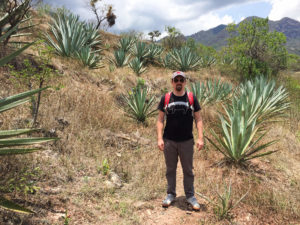
Hiking in the high-altitude agave fields of Santa Catarina Albarradas.
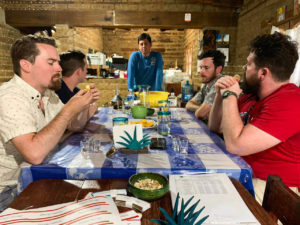
The beginning of a tasting with Lalo Angeles of Lalocura.
Prepare the Body
On the morning of your adventure, you should start off with a hearty meal. You may not know when your next meal is going to be, and you certainly will have some mezcal drinking ahead of you. Be sure to have something in your stomach. If you’re leaving in the morning and someone else is transporting you, communicate with them the day before about whether you should eat prior to pick up or you will be stopping somewhere to get a bite. However I’ve been fed many times at a palenque, so be prepared to be offered some delicious home-cooked Oaxacan food. If you are fed a meal at a palenque, offer to pay for it. Most hosts will turn you down, but this is an expense to them and the offer to cover costs shows respect and gratitude for the meal.
Be Gracious
When you visit a palenque remember to treat the environment and people you encounter with respect. Many Mezcaleros/Mezcaleras live in close proximity to the palenque, treat it as if you’re being welcomed into their home. It’s most common to meet the Mezcalero/Mezcalera, their talented team and their family. At many palenques you will get a tour of the production area, agave fields, and an explanation of their distilling process. Finally, you will be offered some mouthwatering mezcal. It’s pretty customary for a Mezcalero/a to offer you all of the different batches they currently have. This could be as little as one or two, or as many as sixteen! When I was visiting Eduardo Angeles, who produces Lalocura, he sat us down in his kitchen and took us through the sixteen expressions he had, explaining each in detail. In almost all cases you can buy their mezcal, sometimes in various sizes. The Mezcalero/a will tell you the prices if you ask, but don’t haggle. At a minimum, it’s good practice for someone in your group to at least buy one bottle, but that’s usually not a problem as the mezcal you try will be so delicious you will happily buy plenty.
Palenque visits come with plenty of surprises, usually the great kind which involve a special mezcal you’ve never tried before. While out on a palenque visit keep an open mind and be gracious to your hosts. One of my favorite things about Oaxaca is the warm hospitality I receive everywhere I go.
What palenques do you want to visit? Have you been to any? What were your best experiences?
Note: This blog post mentions “palenque” visits specifically, but the same advice could be taken when visiting “tabernas,” “vinatas,” or any other place where small-batch agave spirits are made in different regions of Mexico.


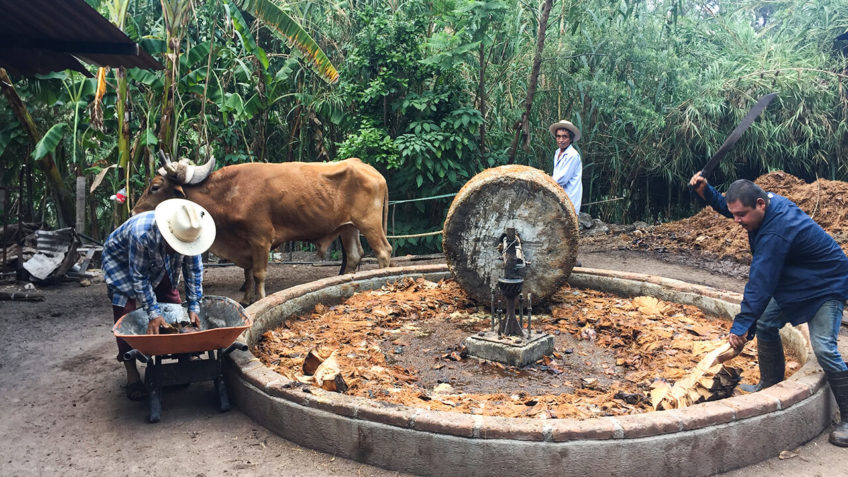

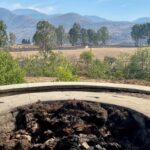
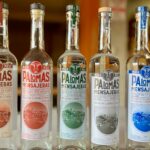
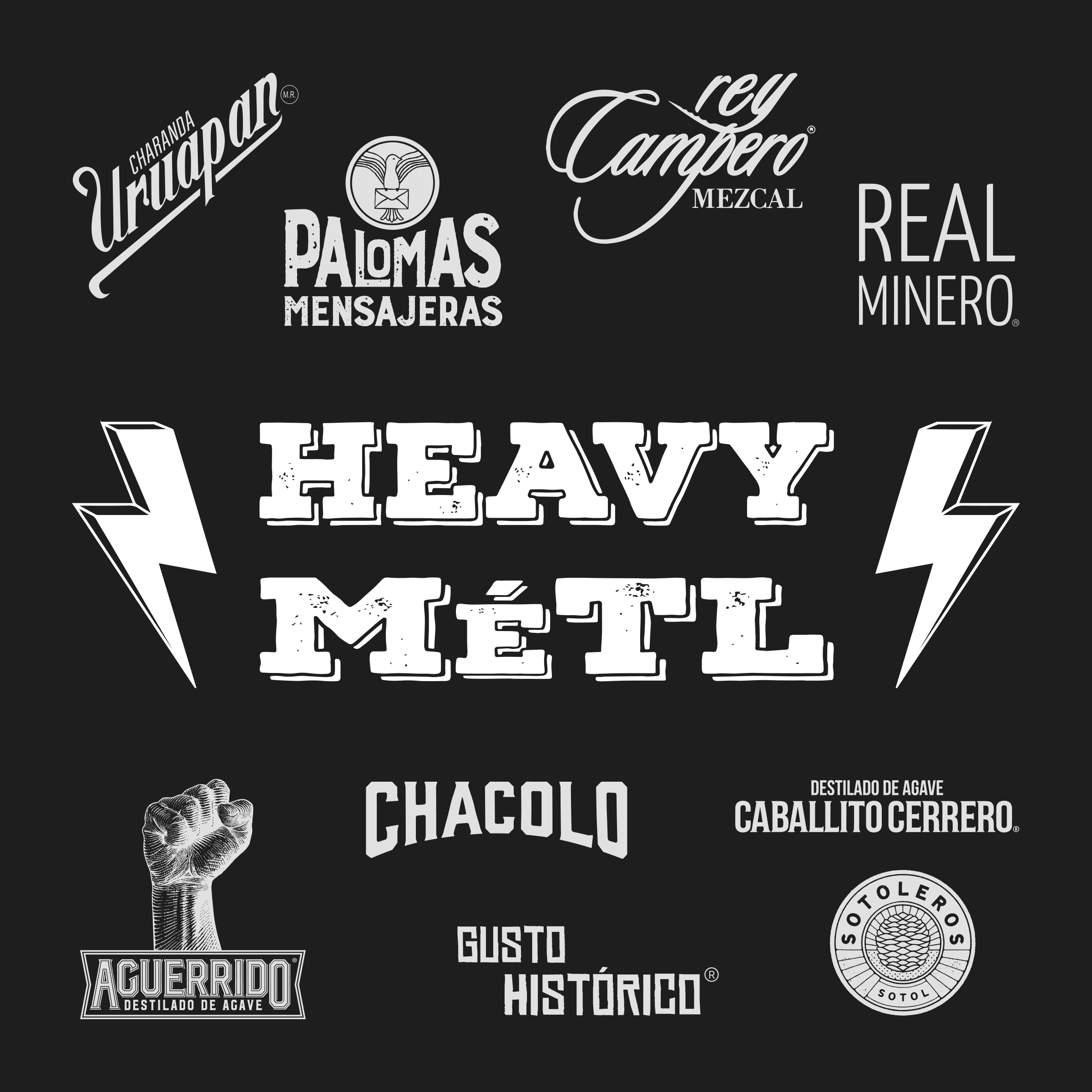
MC
9 months agothis was so helpful–thank you! is it common/easy to hire a driver from citer center out to palenques? is it customary to make reservations ahead of time, or ok to show up day-of? thanks for any tips!
Jonny
9 months agoThere are drivers that you can hire in OAX, and yes you should let producers know that you would like to visit ahead of time. The easiest way to do this is through a guide. We suggest you contact Oaxacking or Alvin Starkman at Mezcal Educational Tours. We have blog posts about our experiences with both of them.